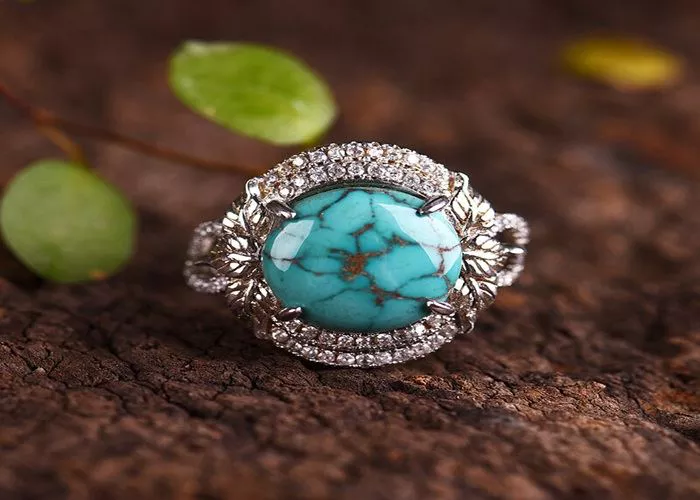Sapphire, derived from the Latin word “Sapphins,” meaning blue, is a gemstone renowned for its elegance and beauty. As a member of the corundum family, sapphire is second only to diamond in hardness, making it a durable and cherished gemstone. This guide aims to provide a comprehensive, science-based introduction to selecting a sapphire, covering various aspects such as color, clarity, cut, carat, origin, and treatments.
Understanding Sapphire Colors
Sapphire is most famously known for its blue hues, ranging from light to deep blue. However, it also encompasses a variety of non-blue colors such as pink, yellow, green, and more. When choosing a sapphire, color is paramount.
Color Saturation: High-quality sapphires exhibit medium to deep color saturation, neither too light nor too dark. The color should be evenly distributed throughout the gemstone, without noticeable color banding or spots.
Ideal Blue Shades: The most sought-after blue shades are “Royal Blue” and “Cornflower Blue.” These blues are deep and bright, commanding high values.
Clarity: Inspecting Internal and External Features
Clarity refers to the internal and external imperfections within a gemstone. While flawless sapphires are extremely rare, high-quality sapphires should have minimal and inconspicuous inclusions.
Common Inclusions: Crystals, needles, and feather-like fractures are typical inclusions. High-quality sapphires have small and unobtrusive inclusions, ideally located at the edges or in inconspicuous areas.
Impact on Transparency and Brilliance: Inclusions should not detract from the gem’s transparency and brilliance.
Cut: Maximizing Brilliance and Beauty
The cut of a sapphire significantly impacts its appearance and value. A well-cut sapphire maximizes its brilliance and color.
Proportions and Symmetry: A sapphire with well-balanced proportions and symmetry reflects light better, appearing more radiant.
Facet Uniformity: The facets should be evenly cut and smooth, without noticeable wear or irregular cuts.
Impact on Visual Appeal: A well-cut sapphire enhances its visual appeal, making it more captivating.
Carat Weight: Balancing Size and Quality
The weight of a sapphire is measured in carats, with 1 carat equaling 0.2 grams. Larger sapphires are generally rarer and more expensive, but weight is not the sole criterion.
Balancing Weight and Quality: When selecting a sapphire, balance its weight with its quality, ensuring the gem’s color, clarity, and cut meet high standards.
Visual Impact: Smaller but higher-quality sapphires may visually outperform larger but slightly inferior ones.
Origin: Influencing Value and Characteristics
The origin of a sapphire can significantly affect its value and characteristics.
Myanmar (Burma): Renowned for its vivid blue hues and high clarity, Myanmar sapphires are highly valued.
Kashmir: Rare and expensive, Kashmir sapphires have a unique velvet-like texture, making them collector’s items.
Sri Lanka, Thailand, China, and Australia: Each of these origins produces sapphires with distinct characteristics.
Treatments: Enhancing Color and Clarity
Most sapphires undergo some form of treatment to enhance their color and clarity. Understanding these treatments helps assess a gem’s true value.
Heating: The most common treatment, heating can significantly improve a sapphire’s color and transparency. Heated sapphires retain high value.
Diffusion Treatment: Changes the color by diffusing elements into the gem’s interior, resulting in a lower price.
Filling: Using glass or other substances to fill cracks, enhancing the gem’s appearance. These sapphires have lower value.
Certificate and Authentication: Ensuring Quality
When purchasing a sapphire, ensure it comes with a certificate from an authoritative gemological institution, such as GIA, IGI, or AGS.
Detailed Information: These certificates provide detailed information about the gem’s color, clarity, cut, and treatments, offering reliable quality assurance.
Importance of Certification: A certified sapphire offers peace of mind and ensures you’re getting a gemstone of the highest quality.
Identifying and Differentiating Sapphires
Sapphire can be distinguished from similar gemstones and synthetic counterparts.
Similar Gemstones: Blue spinel, blue tourmaline, blue zircon, blue topaz, and others may resemble sapphires but have different physical properties.
Synthetic Sapphires: These have uniform color, contain few inclusions, and may have round bubbles. They are less valuable than natural sapphires.
Additional Tips for Selecting Sapphires
Viewing in Different Light Sources: Examine sapphires in both natural daylight and artificial light. Their color may appear lighter in strong light and darker in regular daylight.
Checking for Cracks and Inclusions: Ensure the sapphire has no noticeable black inclusions or cracks that could affect its durability and beauty.
Considering the Cut: The cut’s proportions, such as the table, facets, brilliance, and pavilion depth, all contribute to the sapphire’s overall appeal.
Entry-Level Weight: While larger sapphires are more valuable, an entry-level weight around 1 carat is a good choice for balance.
Sapphire Care and Maintenance
Sapphire is a brittle gemstone, so it should be handled with care to avoid dropping or knocking.
Avoid Hard Impacts: Sapphire’s brittleness makes it susceptible to cracking under hard impacts.
Regular Cleaning: Clean your sapphire jewelry regularly using warm water and a soft cloth to maintain its brilliance.
Conclusion
Choosing a sapphire involves a thorough understanding of its color, clarity, cut, carat, origin, treatments, and authentication. By carefully considering these factors, you can select a sapphire that not only enhances your personal style but also serves as a timeless investment. Whether you prefer the deep, royal blue of a Myanmar sapphire or the unique, velvety texture of a Kashmir gem, a well-chosen sapphire will undoubtedly add elegance and sophistication to your collection.
Related topic:
- What Is the Prettiest Turquoise?
- Stabilized Turquoise Powder: Innovative Uses in Jewelry Making
- Top 5 Heart Shaped Turquoise Rings for Engagements


